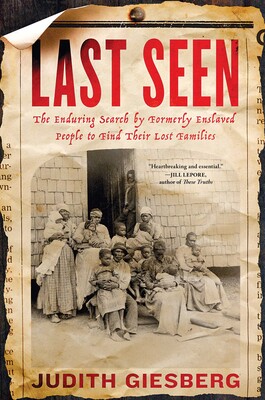With the help of her students, Judith Giesberg, a professor of history at Villanova University, has collected these materials for years and made the still-expanding archive of them publicly available on the internet. In her new book, Last Seen, Giesberg is only able to pursue a handful of the stories from the archive. But those stories are well chosen and effective representatives of so many others, and they are powerful. For one thing, they throw into stark relief some of the insulting and revolting myths about slavery that proliferated in American culture by the late nineteenth century. They expose depictions of slaveholders as loving caretakers as fairy tales, disprove the lie that family separations were rare and inconsequential, and demonstrate that white Americans who saw the longing of former slaves for their families as amusing plantation romances still believed Black families were less vital and real than their own. But above all else, the stories Giesberg tells are damning testimonies to the utter viciousness of a system that thrived on tearing Black families apart without mercy, and poignant portrayals of enduring love and hope that indifference and cruelty could never extinguish.
Among the countless barbarities of slavery in the United States, the violent sundering of Black families was among the most diabolical. After the importation of enslaved people from overseas was banned in 1808, slave laborers could only legally be acquired domestically, giving rise to a booming internal market in human beings. In the decades before the Civil War, more than one million enslaved people were taken across state lines. Perhaps twice as many people were bought and sold within the boundaries of individual states. Most of those trafficked were children, teenagers, and young adults considered strong enough to survive the grueling labor regimen of America’s expanding cotton empire. Slaveholders and their slave trader allies cared little about the family and communal ties that enslaved people had forged. They tore holes in the hearts of their victims and rent the social fabric of Black lives as they forcibly walked or shipped people hundreds of miles from their homes in what Giesberg and other historians refer to as the Second Middle Passage.
The chaos of the Civil War scattered Black Americans across the landscape once again. As they joined Union armies, sought harbor in refugee camps, and took flight from their enslavers, they not infrequently lost track of family members. And when the war ended, they received almost no formal assistance in relocating loved ones or otherwise piecing back together the lives that they had already fought so hard to rebuild, sometimes more than once.
